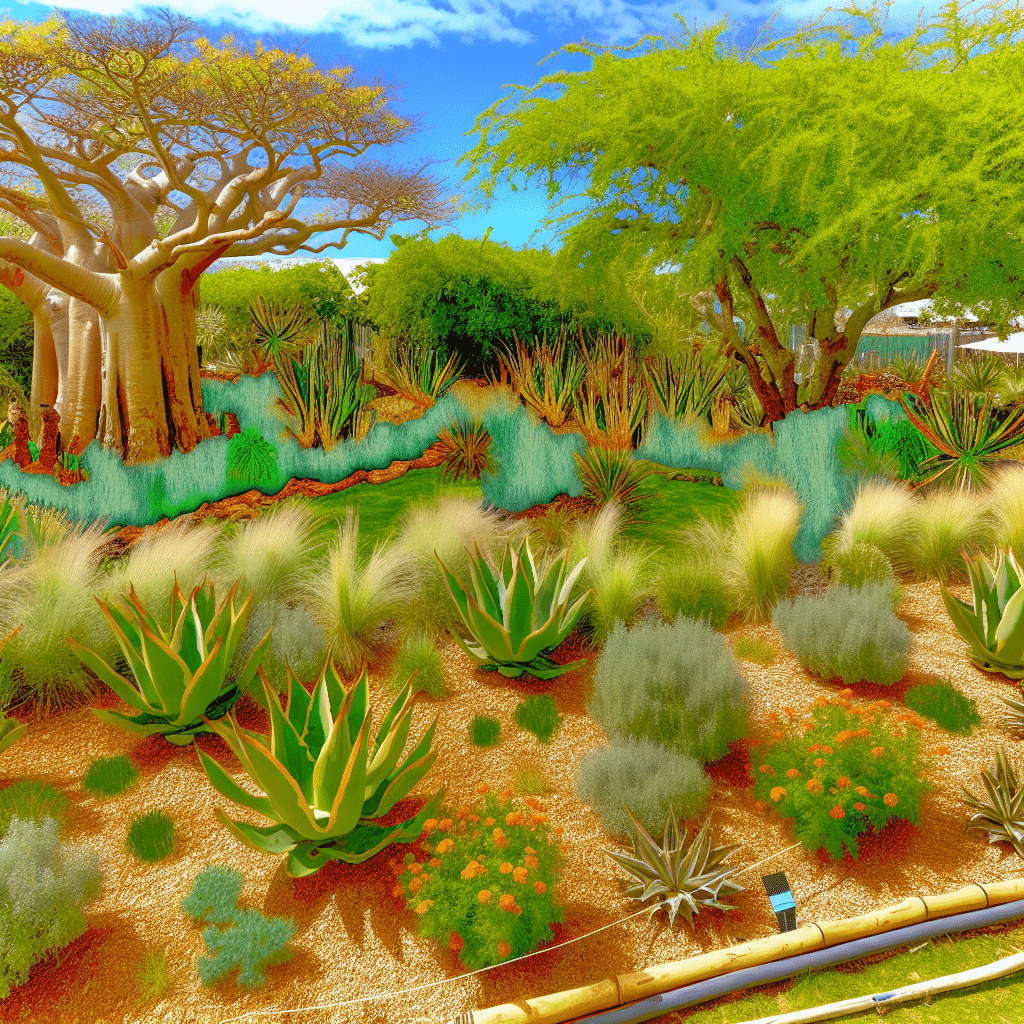Gardening in the savannah can be a remarkably enriching experience, offering a unique blend of challenges and opportunities. While arid climates and limited water resources pose significant hurdles, the potential for creating a vibrant, sustainable garden is immense. This article explores various strategies and tips for successful savannah gardening, ensuring your landscape not only survives but thrives.
Understanding the Savannah Climate: What Makes it Unique?
A savannah is characterized by its distinct seasons—wet and dry. Typically found in regions like sub-Saharan Africa, parts of Australia, and areas of South America, savannahs boast a mix of grasslands and sparse tree cover. Understanding the intricacies of the savannah climate is the first step towards mastering savannah gardening.
Seasonal Variations
The wet season is usually short but intense, providing ample water for plant growth. Conversely, the dry season can be prolonged, demanding efficient water management and drought-resistant plant species. Recognizing these patterns aids in selecting appropriate plants and planning an effective irrigation system.
Soil Composition
Savannah soils are often sandy and nutrient-poor. Enhancing the soil with organic matter can improve its structure and fertility. Composting and using natural fertilizers can significantly boost the soil’s capacity to support plant life.
Choosing the Right Plants: What Should You Grow?
Selecting suitable plants is crucial for successful savannah gardening. The plants you choose should be resilient, drought-tolerant, and ideally, native to the region.
Native Plants
Plants indigenous to the savannah are inherently adapted to its climate, requiring minimal maintenance. Examples include the African Baobab, Acacia trees, and various grasses like Bermuda and Buffalo grass. These plants not only thrive in arid conditions but also support local wildlife.
Succulents and Cacti
Succulents and cacti are excellent choices for savannah gardening due to their water-storing capabilities. Varieties like Aloe Vera, Agave, and the Prickly Pear Cactus can add aesthetic appeal while being highly drought-tolerant.
Flowering Plants
For those who desire a splash of color, consider flowering plants like the Bird of Paradise, Kangaroo Paw, and Marigolds. These plants can withstand dry spells and bring vibrancy to your garden.
Water Management: How to Optimize Irrigation?
Efficient water use is paramount in savannah gardening. Implementing smart irrigation techniques can conserve water while ensuring your plants receive adequate hydration.
Drip Irrigation Systems
Installing a drip irrigation system is a highly effective way to deliver water directly to the plant roots, minimizing evaporation and runoff. These systems are especially beneficial during the dry season.
Rainwater Harvesting
Collecting and storing rainwater can provide a valuable supplementary water source for your garden. Simple methods like using rain barrels or more advanced systems like underground cisterns can significantly enhance your water supply.
Mulching
Applying mulch around plants helps retain soil moisture, suppress weeds, and regulate soil temperature. Organic mulches, such as straw or wood chips, also add nutrients to the soil as they decompose.
Soil Improvement: Can You Boost Nutrient Levels?
Improving soil quality is essential for the long-term success of your savannah garden. Nutrient-rich soil promotes healthier plant growth and increases resilience against pests and diseases.
Composting
Creating a compost pile with kitchen scraps, yard waste, and organic materials can enrich the soil. Composting not only recycles waste but also enhances soil structure and fertility.
Organic Fertilizers
Using organic fertilizers like bone meal, blood meal, and fish emulsion can provide essential nutrients to the soil. These natural fertilizers release nutrients slowly, reducing the risk of over-fertilization and promoting sustained plant health.
Sustainable Practices: How to Maintain Your Savannah Garden?
Adopting sustainable gardening practices ensures the longevity and health of your savannah garden. These methods not only benefit the environment but also reduce maintenance efforts over time.
Permaculture Principles
Permaculture is a holistic approach to gardening that emphasizes sustainability and self-sufficiency. Incorporating permaculture principles in your garden design can create a resilient ecosystem that thrives with minimal intervention.
Integrated Pest Management
Using natural predators, companion planting, and organic pesticides can effectively manage pests without harming the environment. Integrated Pest Management (IPM) strategies focus on preventive measures and ecological balance.
Crop Rotation
Rotating crops can help prevent soil depletion and reduce the risk of pests and diseases. By changing planting locations each season, you can maintain soil health and optimize nutrient availability.
Final Thoughts: Is Savannah Gardening Right for You?
Savannah gardening is a rewarding venture that combines creativity, environmental stewardship, and practical gardening skills. Whether you are looking to create a sustainable landscape, support local wildlife, or simply enjoy the beauty of nature, this guide offers a comprehensive approach to achieving your gardening goals in arid climates.
By understanding the unique aspects of the savannah environment, selecting the right plants, optimizing water use, improving soil quality, and adopting sustainable practices, you can create a thriving garden that withstands the challenges of the savannah climate. Embrace the adventure of savannah gardening and transform your outdoor space into a flourishing oasis.




